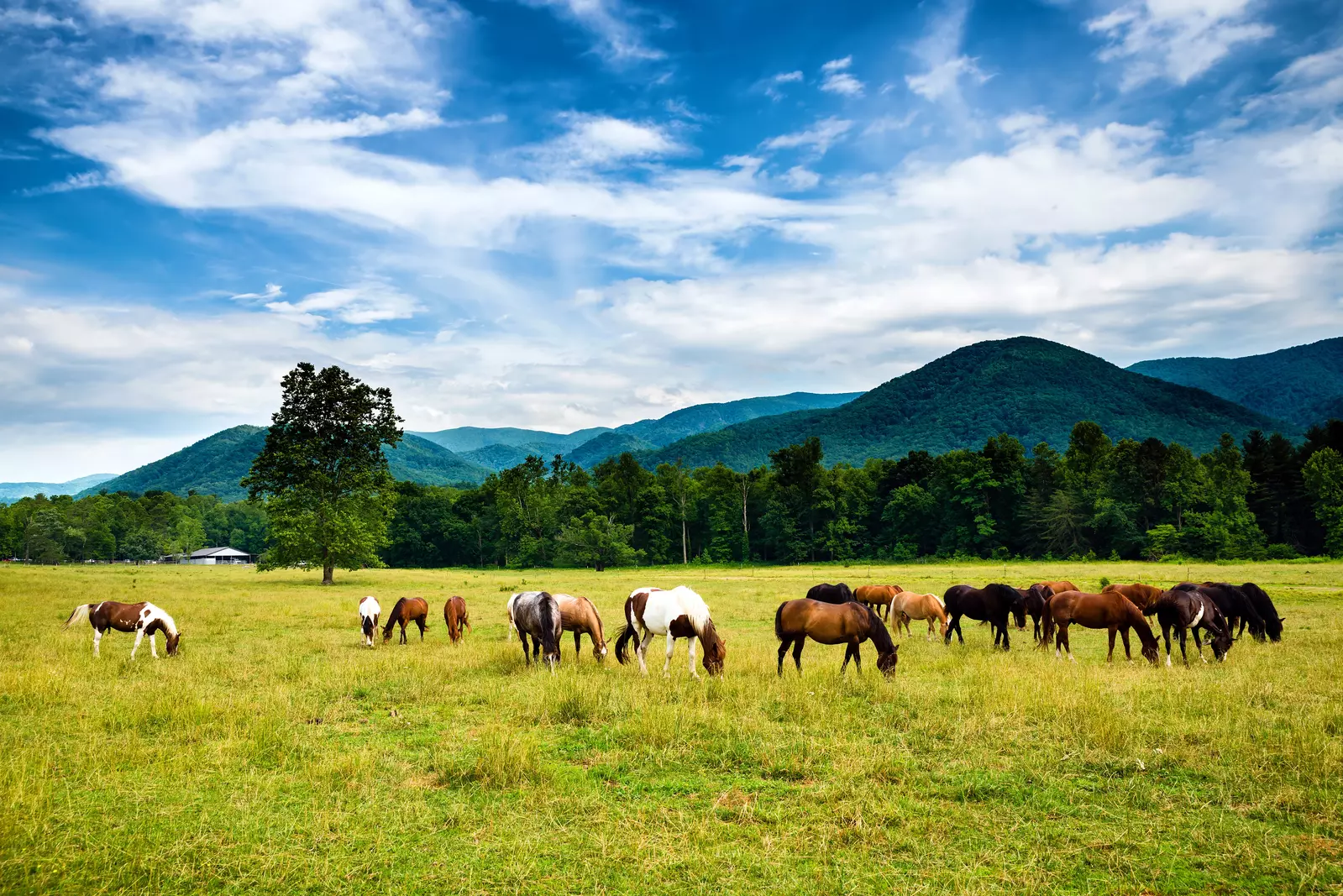The Great Smoky Mountains National Park is full of salamanders, and that includes Cades Cove. A common place to see Smoky Mountain salamanders in Cades Cove is Abrams Falls. If you look closely, you’ll likely see at least one if not a bunch of these unique creatures crawling around the rocks. These animals are small but interesting, so here are a few fun facts you probably didn’t know about our Smoky Mountain salamanders.
1. The Smoky Mountains are known as the “Salamander Capital of the World.”
 The Great Smoky Mountains National Park is home to a wide variety of animals, including mammals, birds, reptiles, and amphibians. The biggest group of amphibians in the national park are Smoky Mountains salamanders. There are over 30 different species of salamanders that live here! That’s why the Smoky Mountains have become known as the “Salamander Capital of the World.”
The Great Smoky Mountains National Park is home to a wide variety of animals, including mammals, birds, reptiles, and amphibians. The biggest group of amphibians in the national park are Smoky Mountains salamanders. There are over 30 different species of salamanders that live here! That’s why the Smoky Mountains have become known as the “Salamander Capital of the World.”
2. Smoky Mountain salamanders are often confused with lizards.
Many people think salamanders are a type of lizard. In fact, Smoky Mountain salamanders are even commonly called “spring lizards.” However, the two types of animals are actually very different. Lizards are reptiles and have scales. Salamanders, on the other hand, are amphibians and don’t have scales. They’re shiny and feel slimy to touch. However, though it may be tempting, it’s best to not touch them and instead admire these animals from a respectful distance. The oils on your hands can harm their highly absorbent skin.
3. Salamanders are carnivores.
 You probably didn’t expect to discover that salamanders are carnivores. Here in the Smoky Mountains, salamanders mainly eat a variety of small invertebrates that include worms, spiders, slugs, dragonflies, centipedes, insect eggs, frog eggs, and others. Salamanders catch their food a lot like a frog by extending their long tongues from a safe striking distance. These amphibians have small teeth to help them chew their prey.
You probably didn’t expect to discover that salamanders are carnivores. Here in the Smoky Mountains, salamanders mainly eat a variety of small invertebrates that include worms, spiders, slugs, dragonflies, centipedes, insect eggs, frog eggs, and others. Salamanders catch their food a lot like a frog by extending their long tongues from a safe striking distance. These amphibians have small teeth to help them chew their prey.
4. Salamanders can regenerate limbs and organs.
One of the coolest facts about Smoky Mountain salamanders is that they can regenerate limbs and organs. This unique ability gives them a great way to survive attacks from predators such as turtles, raccoons, and snakes. If a salamander is hurt or loses a limb, it can heal itself and regenerate the missing limb. If a vital organ such as its heart, lung, or brain is damaged, a salamander can repair that as well! Younger salamanders can regenerate body parts much faster than older salamanders.
5. Some species of salamanders breathe through their skin.
 Most salamanders are born in the water with gills. Most species of salamander that live on land develop lungs as they grow and eventually lose their gills. Other species have neither lungs nor gills to breathe. Instead, they can breathe through their skin. They get oxygen through blood vessels spread onto their skin that exchange gases with the air.
Most salamanders are born in the water with gills. Most species of salamander that live on land develop lungs as they grow and eventually lose their gills. Other species have neither lungs nor gills to breathe. Instead, they can breathe through their skin. They get oxygen through blood vessels spread onto their skin that exchange gases with the air.
6. Salamanders don’t have vocal cords.
Unlike most of the animals you’ve seen and heard in Cades Cove, salamanders don’t have vocal cords. Instead, salamanders communicate with one another through snapping or clicking sounds. They may also exhale loudly in dangerous situations. Salamanders can even communicate using chemical signals and their sense of touch. Being able to communicate without sound may be a useful defense mechanism because it’s more difficult for predators to find them without sound.
Hike Abrams Falls Trail to See If You Can Find Smoky Mountain Salamanders
One of the best places to see salamanders in Cades Cove is Abrams Falls. Salamanders can often be found among the rocks in the shallow waters. Just make sure you show these amazing creatures respect by keeping a safe distance. Find out more about hiking the Abrams Falls Trail in Cades Cove and see if you can spot any salamanders while you’re there!









